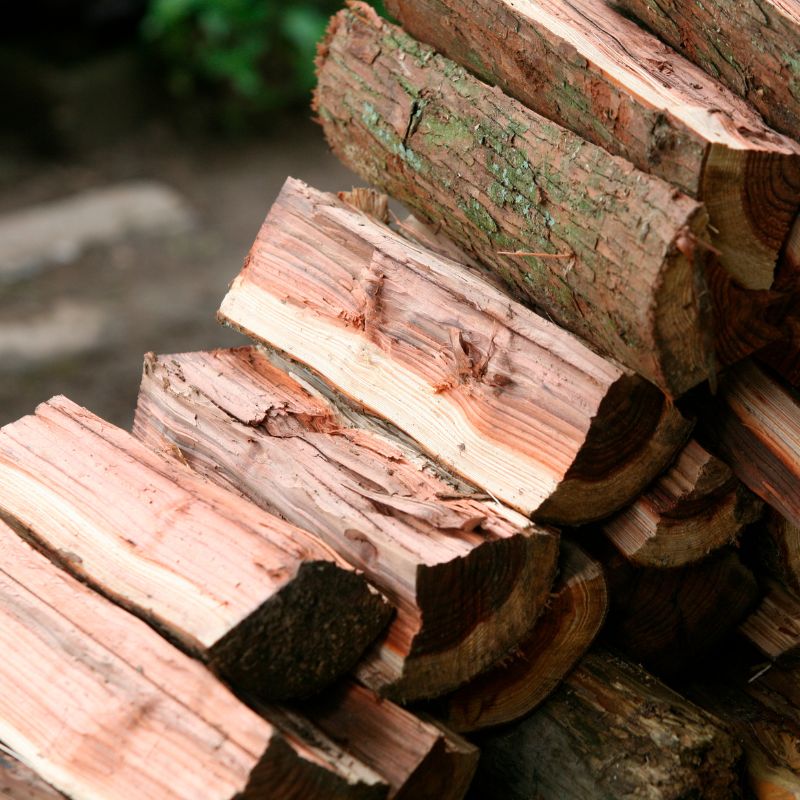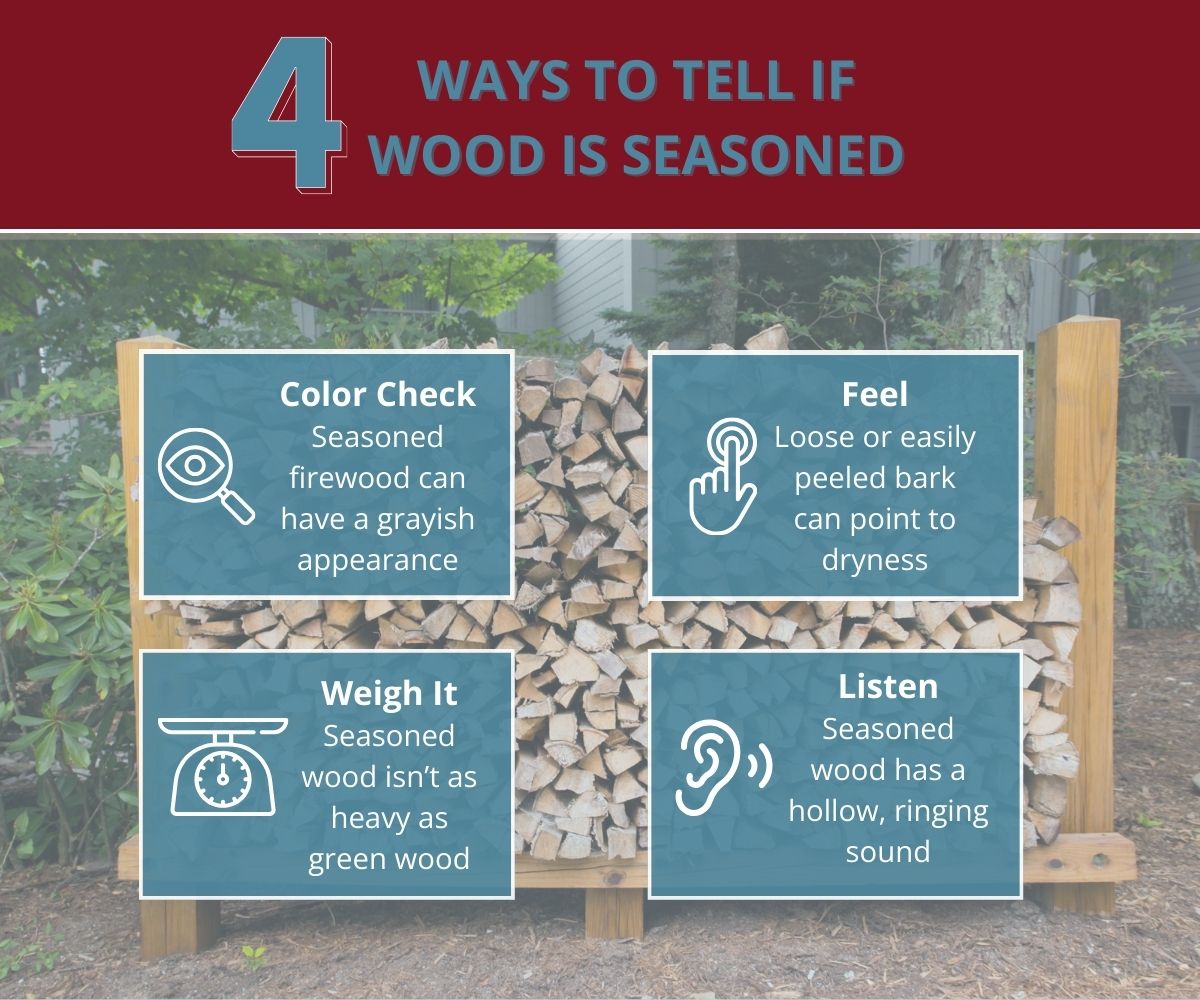One of the biggest benefits of having a fireplace is the ability to save money on energy expenses. That said, if you’re still purchasing firewood year after year, you may not be getting the most bang for your buck. You can cut back on costs even more by seasoning and storing your own firewood. It may seem like a tall task, but it’s more simple than you think. To help you out, we have a few tips to get you started.
What Is Seasoned Wood?
Seasoned firewood is wood that has been left out to air dry for at least six months to allow the moisture content to drop significantly.
Remember that before your firewood ended up in your fireplace or wood stack, it was once part of a living tree that played a vital role in our ecosystem. Trees act like sponges – absorbing and storing carbon dioxide from the air – which means firewood contains a certain amount of moisture, even after it’s been cut down.
Unlike humans and animals that consume and process water, trees absorb and retain moisture, which helps them to grow big and strong. However, this moisture content doesn’t exactly bode well when you are trying to enjoy a relaxing evening by the fire.
The solution is seasoning your firewood ahead of time, ensuring most of that moisture releases long before you toss it into your firebox. The final result is fires that burn hotter and cleaner. In other words, you’ll get to enjoy better fires with less firewood.
How to Properly Stack & Store Firewood
Storing firewood is a delicate balance. It’s recommended that firewood be stored outdoors and away from your home…but you also need to keep it off the ground and dry. You also have to make sure the firewood gets plenty of sunlight and there is enough airflow. It’s a puzzle that can be tough to solve.
Here are a few tricks to keep your firewood protected and ready to go:

- Find a good spot. Not everyone has a shack or shed on their property that they can use for this purpose, but that’s okay. Choose a well-ventilated location that is a few feet away from your home (firewood is an attractant for pests and bugs) and isn’t blocked from sunlight.
- Get the ground ready. Clean up any vegetation and debris in the area. If the ground is uneven, do your best to level it out. This will help prevent the woodpile from tipping over.
- Keep your stack off the ground. Never place firewood directly on the ground. Use pallets, cinder blocks, or a dedicated firewood rack to keep the stack at least six inches off the ground. This stops moisture from wicking up from the ground and allows air to flow underneath the pile.
- Don’t pack the wood tightly. Stack the wood loosely, leaving space between the pieces to create air gaps to promote air circulation. This also limits moisture buildup that can lead to rot and draw in pests.
- Stack the wood carefully. Arrange the wood in a single row or stack, with the cut ends facing outwards. This allows the wood to dry more quickly and evenly.
- Cover the stack during bad weather. We’re no strangers to rainy weather here in Indianapolis, but you must keep your firewood as dry as possible. Cover your wood pile with a tarp when the weather takes a turn for the worse. Be sure that the cover extends past the edges of the woodpile to stop water from dripping in.
How Long Can Wood Be Stored?
A well-maintained stack can hold up for a long time. We’ve seen estimates of up to 10 years, but we recommend using your firewood in two to three years for the best burning experience. Keep in mind that factors like moisture content, storage location, and weather all play a role in how long your firewood can last. If your stack starts to show signs of rot, discoloration, or increased weight, consider a relocation.
How Can I Tell if Wood Is Seasoned?
Firewood is considered seasoned when its moisture content is 20% or lower, which can take a minimum of six months. The easiest way to tell if your firewood is ready is to use a moisture meter. That said, if you don’t have a meter handy – or you want to pick up some tips to expand your knowledge – there are other clues to watch for.
Look for the following signs:

- Check the color. Seasoned firewood can have a grayish appearance and may have small cracks or splits on the ends.
- The bark comes off easily. Loose or easily peeled bark can indicate dryness. Green or freshly cut wood typically has tight bark that is firmly attached.
- It is lighter in weight. Seasoned wood is significantly lighter than green wood of the same size.
- It sounds hollow. Try tapping the wood or knocking two pieces together. Seasoned wood has a hollow or ringing sound, while green wood will produce a dull thud.
Keep Your Fireplace in Tip-Top Shape
Storing and seasoning firewood can feel like an unnecessary chore, but it’s another way to become more self-sufficient and ensure that your chimney system is getting the best quality fuel available. And when your fireplace does give you problems, you can turn to Smalling Masonry. Our team of chimney professionals is certified, experienced, and ready to get to work. Book an appointment online or reach out to us at 317-903-8121 today!
